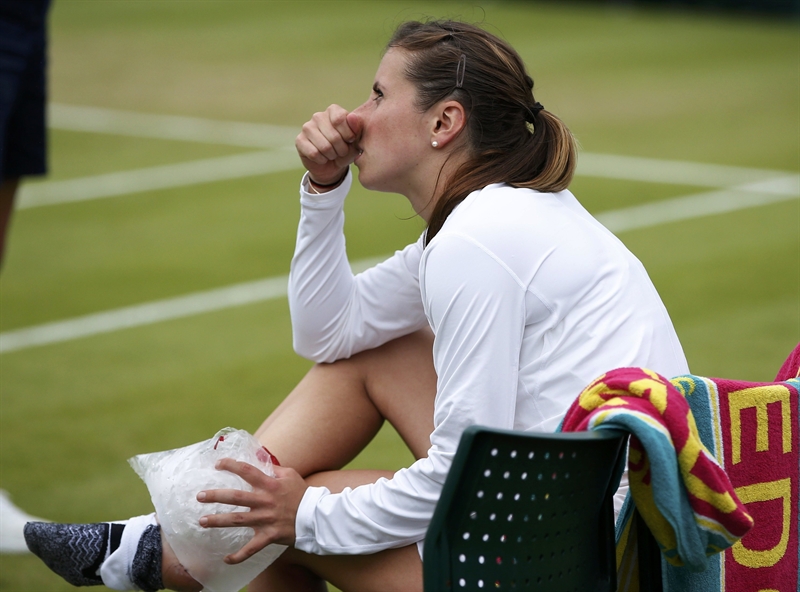You are viewing 1 of your 1 free articles
Deltoid ligament: Not your run-of-the-mill ankle sprain

Most sportsmen sprain their ankles laterally, however, there is the rare instance of a medial ankle sprain. In today’s feature article highlighting uncommon injuries, physiotherapist Chris Mallac explores deltoid ligament injuries. How infrequent are these injuries? Researchers in Alabama conducted an epidemiological study to find out1. They reviewed a large sample of the National Collegiate Athletic Association (NCAA) members through the Injury Surveillance Program (ISP) from 2009-2015.
The study sample consisted of players of 25 varsity sports whose athletic trainers (AT) reported injury data. They defined deltoid ligament injury as one occurring during collegiate sports play or practice, and requiring consultation or treatment from either the AT or a physician. Injuries to the deltoid ligament occurred in this population – athletes from 25 different sports – during this time period, at a rate of 0.79/10,000 athletic exposures. This means that an athlete has to actually participate in the sport – in either practice or competition – more than 10,000 times to have a chance of spraining his deltoid ligament. When examining sports specific injuries, the rates of deltoid sprain in men’s football, women’s gymnastics, and men and women’s soccer and basketball, were higher than the overall rates.
Roughly half (49.7%) of all recorded injuries in the study occurred due to player-to-player contact. A little more than one third of the injuries (39.5%) were mild with no time lost in sport, and only 6.6% were severe. As expected due to the high rate of contact injuries, more players injured their deltoids during competition than during practice.
Figure 1: Anatomy of the medial ankle

Mechanism of injury
The medial ankle is fairly well protected by the fan of ligaments known collectively as the deltoid ligament; therefore it requires a large force to strain the medial structures (see figure 1). Studies show that the deltoid ligament may be injured more often than we think. Fifty participants in a Korean study underwent 3T Magnetic Resonance Imaging prior to ankle arthroscopy for lateral ankle sprains2. The MRI detected concurrent injury to the deltoid ligament in 36% of the patients. Other researchers report as many as 39% of studied ankle fractures also involved damage to the deltoid ligament1. Therefore, deltoid sprains and tears may get overlooked when treating more concerning injuries.Knowing there may be an undetected concurrent sprain, evaluate medial stability in all ankle injuries, especially when an athlete demonstrates chronic instability. Deltoid ligament involvement requires particular consideration when planning rehabilitation and return to sport. Mallac outlines a progressive program to return to running as well as appropriate taping to decrease chances of re-injury (see figure 2). Most minor isolated deltoid sprains require little to no loss of time from sport – good news for athletes who suffer this uncommon injury!
Figure 2: Low-dye taping for medial stability

References
- J Ath Trng. 2017;52(4):350-59
- Jireab H /raduik, 2015;16(5):1096-1103
Newsletter Sign Up
Subscriber Testimonials
Dr. Alexandra Fandetti-Robin, Back & Body Chiropractic
Elspeth Cowell MSCh DpodM SRCh HCPC reg
William Hunter, Nuffield Health
Newsletter Sign Up
Coaches Testimonials
Dr. Alexandra Fandetti-Robin, Back & Body Chiropractic
Elspeth Cowell MSCh DpodM SRCh HCPC reg
William Hunter, Nuffield Health
Be at the leading edge of sports injury management
Our international team of qualified experts (see above) spend hours poring over scores of technical journals and medical papers that even the most interested professionals don't have time to read.
For 17 years, we've helped hard-working physiotherapists and sports professionals like you, overwhelmed by the vast amount of new research, bring science to their treatment. Sports Injury Bulletin is the ideal resource for practitioners too busy to cull through all the monthly journals to find meaningful and applicable studies.
*includes 3 coaching manuals
Get Inspired
All the latest techniques and approaches
Sports Injury Bulletin brings together a worldwide panel of experts – including physiotherapists, doctors, researchers and sports scientists. Together we deliver everything you need to help your clients avoid – or recover as quickly as possible from – injuries.
We strip away the scientific jargon and deliver you easy-to-follow training exercises, nutrition tips, psychological strategies and recovery programmes and exercises in plain English.










